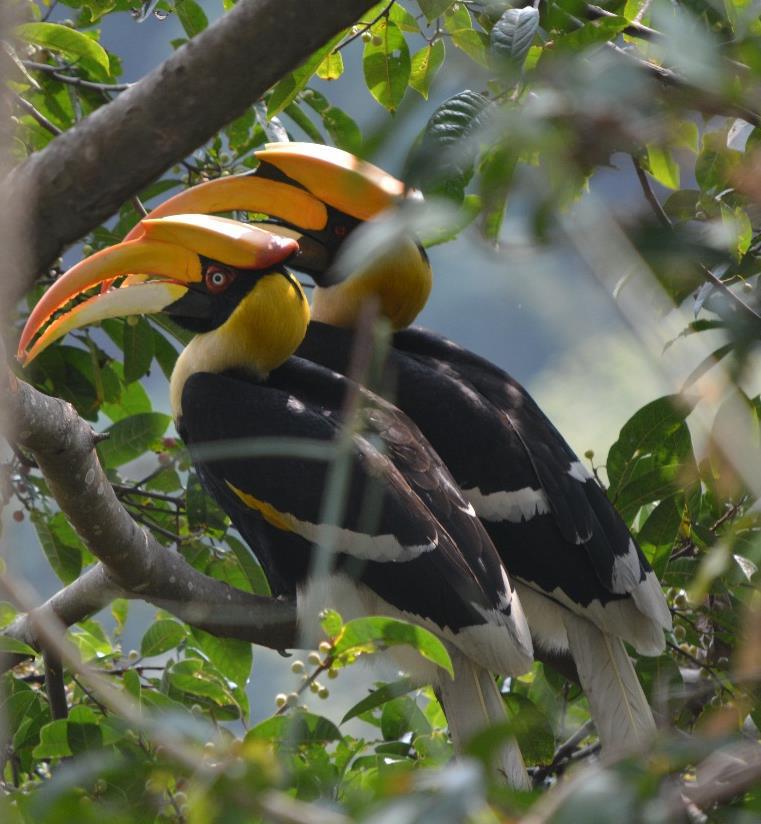Karma Gyeltshen
This is a first study of its kind in the area, aimed to assess the population status of four hornbill species reported in the area. The diet for hornbills in the area during breeding and non-breeding season will be studied. The study is also aimed to assess the nesting and roosting sites of the hornbills within the area. After having studied those, the data can be useful for all the stakeholders for conservation and management of the species and the area. The study also aim to create local people aware through campaigning program to encourage their counterpart in conservation of the species.

Great Hornbill male (right) and female (left).
Hornbills are the large and charismatic birds of tropical forest in Africa and Asia. They are frugivory and disperse seed which help in maintaining forest ecosystem, thus hornbills are also called farmers of the forest (Naish, 2011). Globally there are 57 species of hornbills; 32 in Asia and 25 in Africa (Poonswad et al., 2013). Bhutan harbour four species which are mostly found in broadleaved forest and in the foothill regions.
Jomotsangkha Wildlife Sanctuary (JWS) in the south-eastern Bhutan with maximum coverage of broadleaved forest is a home for all the hornbill species reported in the country. The Great Hornbill (Buceros bicornis) and Rufous-necked Hornbill (Aceros nipalensis) are red listed globally threatened by IUCN. Wreathed Hornbill (Rhyticeros undulatus) and Oriental Pied Hornbill (Anthracoceros albirostris) are listed least concern by IUCN, however currently their status are yet to discuss. Despite JWS is one of the hornbill rich area in the country, the study of the species in the area is lacking since it is the newly established protected area in the country.
This study is aimed to assess the population status of all the sympatric hornbill species in JWS by walking trails. The diet of the species in the area will also be studied by opportunistic observation on foraging and from analysis of middens and regurgitated seeds below roosts and nests. The roosting and nesting sites of hornbills within the area will be searched with the help of local people information, following hornbills in the evening towards roosts or following lone male during breeding season to the nest and by extensive search in the similar and potential roosting and nesting sites.
This study will generate baseline data and it will be important material for management body and all other stakeholders for the species conservation. The awareness program is planned for local people to change their attitude towards conservation by incorporating conservation concept in their mind set. Hopefully this study will also bring conservation impact to other species in the area, of which many are listed globally threatened by IUCN.